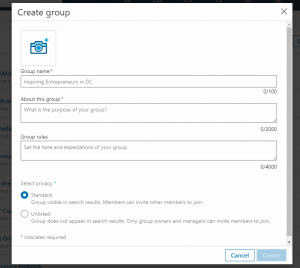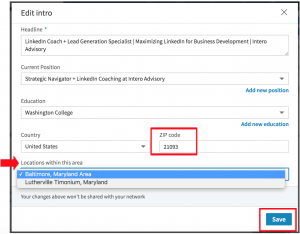Data from Internet Retailer suggests that Indonesia leads the world in e-commerce fraud, with as many as 35% of all transactions from Indonesia identified as probable fraud. Venezuela comes in at a close second, followed by South Africa in third place. And further analysis shows that chargebacks account for up to 70% of all e-commerce frauds.
As a merchant, receiving a notification that a customer has filed a dispute resulting in a chargeback is frustrating, especially when the customer did not contact you first to give you a chance to respond.
There is no method to escape every chargeback. But there are some proactive steps you can take to avoid excessive chargebacks in your business.
And just so you know, having excessive chargebacks is like a nail in the coffin for your business. No acquirer will work with any merchant they consider to be high risk — you will not only lose your merchant account but sometimes your business too.
Before we go into excavating the crucial hacks to help you mitigate the rising threat of chargebacks, let’s clarify the basics.
What is a chargeback in a layman’s understanding?
A chargeback is when a customer’s bank forces a reversal of a transaction payment to the merchant.
The necessity for the chargeback mechanism stems from when consumers began to notice incorrect and unjust billings on their credit cards in the early 1970s.
There were two significant issues of concern. The first is the possibility of a cardholder losing their credit card, resulting in overwhelming bills. And the second was the fear that fraudulent merchants could take advantage of unstructured digital commerce procedures of those days to rip off their clients by inflating prices or billing them repeatedly for the same transaction.
That prompted the consumer protection agency to take immediate action in designing an instrument that could protect the cardholder against such threats.
Consequently, U.S lawmakers passed The Fair Credit Billing Act (FCBA) of 1974 to address the highlighted issues.
The FCBA protects consumers from unfair billing practices and provides a mechanism for addressing billing errors in “open-end” credit accounts, such as credit card or charge card accounts, through what we know as a chargeback today. And in that sense, if a client has issues with a specific transaction, they can seek remediation by demanding a chargeback from their bank rather than contacting the merchant for a refund.
Although chargebacks serve to mediate inevitable disputes that can arise between merchants and customers, the process of administering chargebacks often puts merchants in an unfavorable position.
For starters, whenever a cardholder files a chargeback, their bank will automatically deduct the sum of the disputed transaction and applicable chargeback fees from your merchant account. The merchant is often automatically guilty of whatever crime the customer lists.
Banks charge a non-negotiable chargeback fee. And being a consumer protection mechanism, the process of reversing the chargeback is hugely problematic. You could lose more money and waste precious time trying to fight it. And even when you win the dispute, you only get to recover the transaction revenue.
That said, it’s crucial to note that some chargebacks (up to 40%, to be specific) result from errors on the merchant’s side. Therefore, you’d do your business an excellent service to observe these pointers to avoid excessive chargebacks in your company.
#1 – Have a transparent and customer-friendly order policy
Research shows that merchants with poorly-written return policies are 26% likely to get “Product Not Delivered” chargebacks.
Avoid that nightmare by crafting an order policy that makes it easy for your customers to talk to you. Not bypass you entirely.
Below are some best practices:
Make sure your policy is precise and easy to find. Define what constitutes Sales Final, and remove any barrier in the return process. Make it easy for people to cancel their orders if they wish to do so. Above all, put your policies where customers can find them and educate your staff on that tool.
Consider extending your refund and return deadlines. Customers may take some time to form opinions about their purchases. If your refund deadline has passed but the chargeback time limit has not (which is 120 days from the transaction date), filing a dispute may seem like a good idea.
Include testimonials from past clients on your policy page. Request that satisfied customers describe how simple your return process is and how accommodating your customer service team is. That will convince your customers to work with you instead of filing a chargeback when they have buyer’s remorse.
#2 – Play by industry regulations and best practices
One of Stripe’s spokesmen described the payment processing landscape accurately in a blog. She says, “Behind the scenes, we (Stripe and other PSPs) work closely with payment networks (such as Visa and Mastercard) and banking partners across more than two dozen countries. Each institution has strict legal regulations that govern them and specific rules about the types of businesses they do and do not work with. Through our partnerships, we are bound to uphold those requirements. In addition, we must also—of course—uphold the laws of the countries we operate in. Lastly, we need to be careful regarding the financial risks that different businesses may pose to their customers or Stripe.”
Hence, it would help if you did some due diligence to understand the rules governing your industry. What is the policy regarding the chargeback-transaction ratio? How long do you have to respond to chargeback? What compelling evidence do you need to overturn meritless and fraudulent chargebacks? What are the various chargeback reason codes across the card networks? Getting familiar with these constructs will ensure you are not shooting yourself in the foot. For starters, you can learn more about reason codes here.
#3: Make sure your products or services are worth the cash
E-commerce transactions come with a great deal of risk for the customer. They want to be sure they’re getting their money’s worth. A good product description helps to ensure you tell them the actual status of the merchandise or service.
A chargeback is frequently the outcome of breaking that trust or failing to meet expectations. And from industry data, 15% of customers file chargebacks because their orders didn’t meet their expectations.
Focus on offering a high-quality experience to your customers, and the actual customers will come back for more. Create a customer feedback form to help you gauge their perception of value and quality. And remove substandard deliverables accordingly. More so, don’t forget to include photographs shot from various perspectives in your descriptions. To draw attention to crucial features, use the zoom feature and do not forget to mention characteristics such as size, weight, material, color, etc.
#4: Ensure your website is secure and verify authorization for each transaction
An unsecured website is a Valhalla for payment fraudsters. As exciting as it is to quickly set up shop and start collecting payments, processing orders made with stolen credit cards is a nightmare you don’t want to experience. And just so you know, industry analysis puts the cost of CNP fraud to retailers between 2018 and 2021 at $ 130 billion. And an Aite Group report projects a 16.4% increase in U.S. CNP fraud this year.
Update your site regularly and encrypt the data on your site. Make use of verification tools such as the Client Billing Address (AVS), which automatically verifies the billing addresses of the client with the address in the bank record. Card safety codes assist in proving that a payment card is physically available to the consumer. Consider using 3-D Secure technology and automatic response systems (Mastercard SecureCode, Visa Verified, etc.) to bring an extra layer of fraud prevention such as 2-factor authentication.
There are a few more tools we can recommend. For example, geolocation helps you spot the customer based on the IP address; Blacklisting enables you to track and record the users that show awkward tendencies; Fraud scoring is based on multiple fraud indicators used to generate a score that shows the amount of risk for each transaction.
#5: Complete orders swiftly and accurately
Order fulfillment is a crucial component of a chargeback prevention mechanism. Many merchants fail in this regard. Taking too long to fulfill an order or even delivering the wrong item is a huge negative. Getting your orders out on time will increase customer confidence.
We all get naturally disturbed if we order one thing and receive something different. Consumers today are accustomed to instant gratification. To avoid chargebacks due to a delay in order fulfillment, you will need to do your homework. Here are some pointers:
- Charge in advance and only bill clients after items are delivered.
- Make sure your team has a system in place for reporting low inventory levels. Not being able to fulfill orders when placed will go against your business.
- Have a clear return policy. And use ‘click to accept’ choices to ensure that the customer is aware of all policies, return deadlines, and conditions.
- Make sure everyone on your staff is familiar with your products and knows what to ship at all times.
- If you have agreed to provide a service, follow through on what you said – also try to use a reliable shipping service with an order tracking system.
#6: Work with professional chargeback mitigators
Chargeback mitigation is an uphill battle with minimal success prospects for merchants. And that shouldn’t be a surprise because of the mountain of rules and disjointed processes involved in mitigating chargebacks.
The fact that fraudulent customers know that and continue to milk the loopholes makes it even worse. Look at the numbers: 40% of consumers who file a chargeback will do it again within 60 days. According to RFI Group, friendly fraud generally goes up at a rate of around 41% every couple of years, meaning that friendly fraud typically goes up at a rate of approximately 41% every couple of years. One study shows that almost two-thirds of 47 countries surveyed, 65.95% of the total, experienced an increase in their chargeback-to-transaction ratio.
If your strategy is to fight chargebacks with manual labor and the best of knowledge from your staff, you are making a huge mistake. For one, it’s an expensive approach. And two, you almost always won’t come out on top. Why? Well, for starters, you won’t have the extensive transaction data front at least 50 data points and insights that a chargeback automation tool like Chargeflow can give you. And the back-and-forth processes of evidence gathering and paperwork filing take an ungodly amount of hours.
#7: Ensure your billing descriptors are easy to understand
It is not rare for cardholders to forget about payments or have difficulty comprehending why their accounts have been charged. Some chargebacks are caused by a simple misunderstanding of the billing descriptor.
Card companies used a particular reason code to describe disputes caused by such doubt. These reason codes, however, have been discontinued. When cardholders are unsure about a transaction, the problem is now labeled as fraud.
The best practice to ensure your customers aren’t filing chargebacks because they don’t understand your billing descriptor is for you to have your business name and transaction information in the bill.
- Use a business name that is familiar to customers.
- Ideally, you should use abbreviations to the extent they don’t cut out crucial details. Descriptors are typically 20 to 25 characters long. If your billing descriptor is too long, utilize acronyms to convey more information and check for variances. Note, your billing descriptor may differ depending on the type of card and brand.
- Include your contact so customers can get in touch with you instead of the bank if they have questions.
That brings us to the last point on the list.
#8: Nothing gets better than an exceptional customer service
A happy customer means fewer chargebacks and more revenue. Excellent customer service will help you convert unhappy customers into loyal customers; hence prioritize resolving customer disputes quickly and accurately. Research shows that 86% of customers only contacted the merchant after filing a chargeback or never contacted the vendor at all. With excellent customer service, you can get your customers to discuss their concerns or frustrations with you before taking the next step.
For recurring charges, to avoid excessive chargebacks, you have to:
- Remind clients of upcoming charges, especially if there is a long period between recurring payment cycles.
- Have a clear pricing matrix and make bill cancellation easy.
- Follow through on refunds and cancellation requests that are merited.
- After the refund or cancellation has been approved, communicate with your customers and inform them you have taken action on their requests, providing an estimated time for when the money will be refunded to their account.
Be responsive and show your contact information where customers can easily find them. More so, don’t neglect Social Media mentions while keeping a pulse of your email communications.
There’s a running joke in the e-commerce industry that chargebacks are a risk of doing business. In essence, you should always eat every chargeback because there’s nothing you can do about it. But that’s not true. First of all, you don’t lose the transaction value to a chargeback. For every $ 1 chargeback, e-commerce merchants lose at least $ 2.4, almost 3x the transaction amount. Plus, you also spend an ungodly amount of hours mitigating cases, which you could spend taking your business to the next level.
And as we intimated earlier, having excessive chargebacks means game over for your company. Hence, automating your chargeback management and delegating that responsibility to experts like Chargeflow.io is a great idea. You can be sure of winning 75% more disputes without risking your business sustainability to excessive chargebacks.
Originally published here.
Digital & Social Articles on Business 2 Community
(43)






